Poetry rock garden
One morning in late May 2025, a group of primary school students from Tien Chau midland commune (Tien Phuoc district) visited the complex of Vietnamese Heroic Mothers monuments at Cam mountain, Tam Ky provincial capital, Quang Nam . The students stopped for a long time at the stone garden with engraved poems, before being taken by tour guide Nguyen Thi Truc to visit the main monument. "Even students from far away in Quang Ngai come here to visit all the time!", Ms. Truc "reassured" me when I asked about the distance of dozens of kilometers that the children had just traveled.

Tour guide Nguyen Thi Truc took a group of primary school students from Tien Chau commune to visit the rock garden.
PHOTO: TL
Ms. Truc has nearly 10 years of explaining and introducing to groups at this largest monument complex in Southeast Asia. On the occasion of the 50th anniversary of the country's reunification (April 30), the monument to the Vietnamese Heroic Mother was honored by the Vietnam Association of Architects in the list of 50 typical architectural works... But pilgrims do not always leisurely stroll through the stone garden with engraved poems. They may pay all their attention to the massive main stone statue in front, quickly passing through the 200-meter long main path from Tien Mon Square to the Ritual Square. Some people may not have noticed the 30 stone lanterns placed on both sides of the path, symbolizing the 30 long years of waiting for the day of peace and reunification of the mothers, since 1945. Outside the two rows of stone lanterns is the "poetry garden".
The "Poetry Garden" is displaying a total of 10 large rocks. "In the design, I came up with the idea of erecting rocks engraved with poems about mothers to guide the public's emotions before visiting the main statue area," said sculptor Dinh Gia Thang. The author of the monument to the Vietnamese Heroic Mother still remembers the early days of selecting poems. He selected a few dozen poems in advance and sent them to the province's selection committee. However, it took several months to complete, leaving only 10 passages engraved on 10 rocks. Because there are so many poems written about mothers, we had to choose the most "valuable".
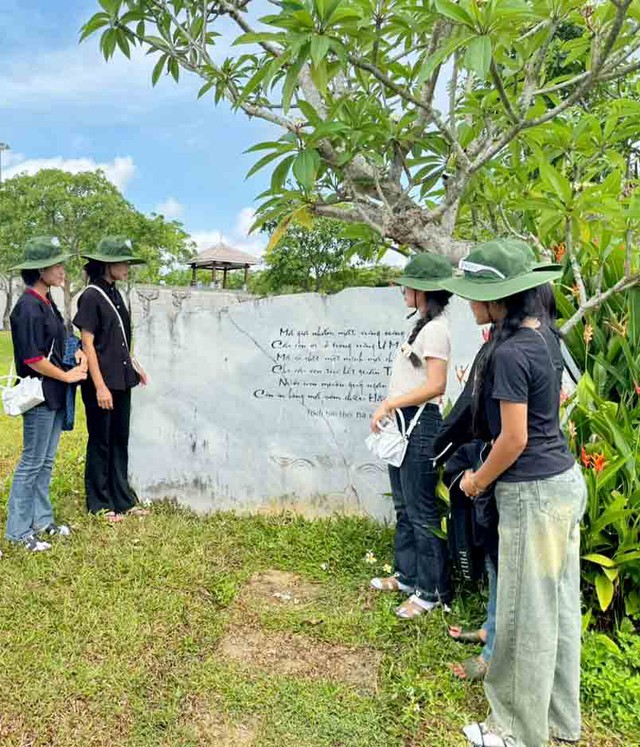
A group of young people next to a rock carved with an excerpt from the poem "Ba Ma Hau Giang" by poet To Huu
PHOTO: TL
I walked around the big rocks, rereading the six-eight verse "Away from home for a few decades/Last night I heard my mother's gentle lullaby" that Uncle Ho wrote in 1929 when he was working in Thailand. The most chosen poem was still To Huu's poem, with 3 sections, carved on 3 rocks. The rest were a folk song, a Thu Bon poem, a Bang Viet poem, and lyrics from 2 songs about mothers by Xuan Hong (My Mother) and Doan Nho (Quang Nam Mother) . The last poem, chosen from the poem "Country" by poet Ta Huu Yen, is also a song about mothers, set to music by musician Pham Minh Tuan with the familiar opening line: "My country is slender, with the sound of a monochord...".
Those poems were carved on white rocks of Nghe An. It must be white rocks, when engraved with words, to make the poems stand out, sculptor Dinh Gia Thang explained. Every day, the humble poetry garden located right in front of that giant monument softens the angular rocks with burning poems.
Heroic and poetic
Every June 21, young people in Quang Nam come to the memorial stele of writer, journalist and martyr Chu Cam Phong on a pilgrimage to the source. Generations of writers and journalists often return here to burn incense in memory. This "red address" is also a destination for many people on other occasions, such as March 26, April 30, July 27, etc.
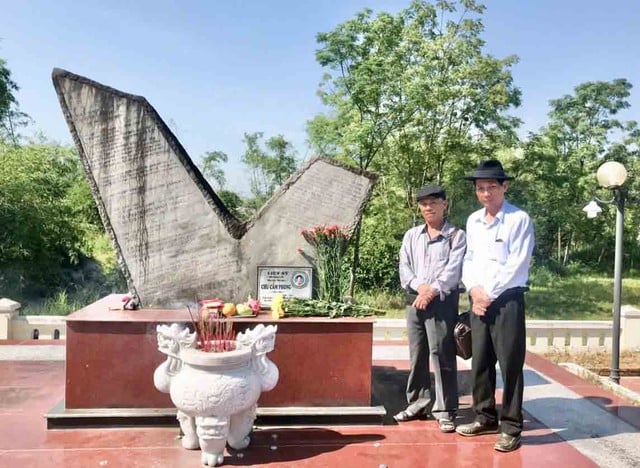
Writer Ho Duy Le (left) during his visit to the memorial stele of writer and journalist Chu Cam Phong.
PHOTO: TL
In March 2010, Chu Cam Phong became the first writer and journalist to be posthumously awarded the title of Hero of the People's Armed Forces by the President. A year later, near the secret bunker next to a small stream in Duy Tan Commune (Duy Xuyen District), a marble stele was erected. The stele was funded by the Quang Nam Province Literature and Arts Association, erected at the place where martyr Chu Cam Phong sacrificed his life, and has engraved with the names of his comrades who participated in the last fierce battle in early May 1971.
Chu Cam Phong is from Hoi An, author of Mother Tham's Orchard Garden, Wind Blowing from Cua Dai, Sea Surface - Frontline, Cold January, Sister Hien's Child ... and is famous for his War Diary published in 2000, a collection of his vivid daily notes on the battlefield of Zone 5. He followed his father to the North, graduated from university and asked to return to the battlefield in the South even though he was chosen to do research abroad. He used to work as a reporter for VNA, then became a reporter and editor for the magazine Literature and Arts Liberation of Central Central (Zone 5), Secretary of the Party Cell of the Literature and Arts Subcommittee of the Propaganda Department of Zone 5.
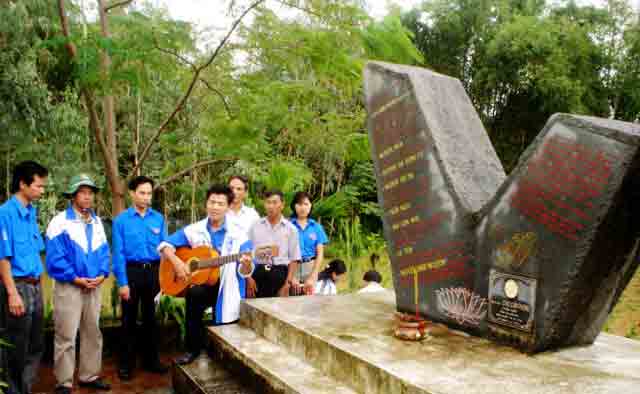
Singing next to Chu Cam Phong memorial stele, before the project was upgraded or renovated
PHOTO: TL
Writer-journalist Ho Duy Le, former Editor-in-Chief of Quang Nam Newspaper and Chairman of the Quang Nam Province Literature and Arts Association, still remembers the days of campaigning to erect the stele. "I discussed with sculptor Pham Hong about the spirit of the stele, then bought a stone to engrave. The stele was erected only about 4 meters from the secret tunnel at the bamboo bank where Chu Cam Phong sacrificed himself," writer Ho Duy Le recalled. The 50 million VND collected nearly 25 years ago was a large sum of money, the cost of erecting the stele was only over 40 million VND, the rest was used as gifts for the families of martyrs.
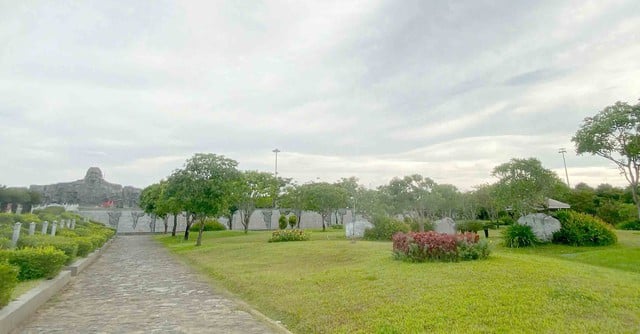
A corner of the rock garden with engraved poems, a space to guide the public's emotions before visiting the main statue area.
PHOTO: HXH
The stele has a shape reminiscent of the secret L-shaped bunker dug by the bamboo bank, where martyr Chu Cam Phong took refuge and fought until the last bullet. But it could also be the letter V (Victory)… Now, that stone stele is called by another name - "the flame-shaped stele". Because in the imagination of his colleagues, it seems that there are 2 sparks flying up to merge into "the flame of Chu Cam Phong", a writer - journalist who loved his job while holding a gun and a pen. Many witnesses said that he had a special working capacity, increasing production, fighting, and going to the base to collect documents. His day usually started at 5:30 am and ended at 1:30 am the next morning…
17 years after its construction, the memorial stele of writer and martyr Chu Cam Phong was upgraded and restored by the Duy Xuyen District government. The garden owner donated more land, so the area is now larger and more spacious, and the stele was moved about
5 m from the old position. But the shape of the stone stele is still intact. The fire on the stele is still burning. A heroic and poetic fire!
Source: https://thanhnien.vn/van-tho-lua-chay-185250617165246167.htm








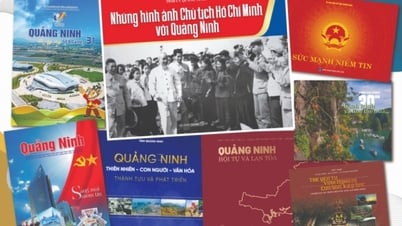

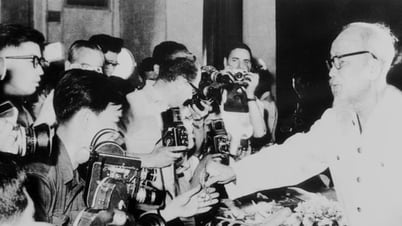

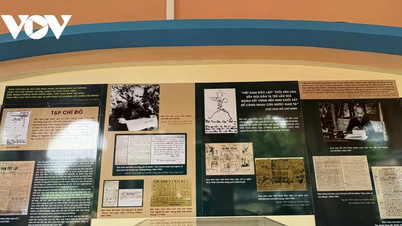

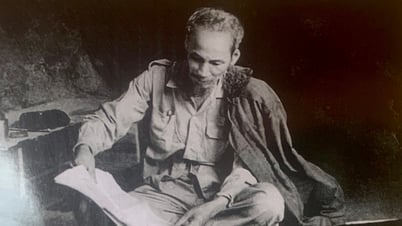

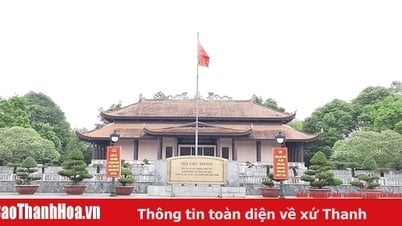

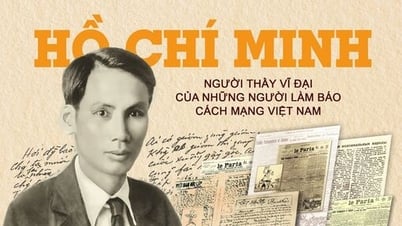


















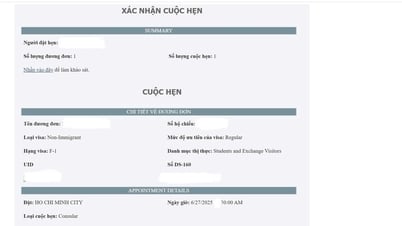

![[Photo] The 9th Congress of the Party Committee of the Office of the President, term 2025-2030](https://vphoto.vietnam.vn/thumb/1200x675/vietnam/resource/IMAGE/2025/6/20/78e7f27e8c4b4edc8859f09572409ad3)

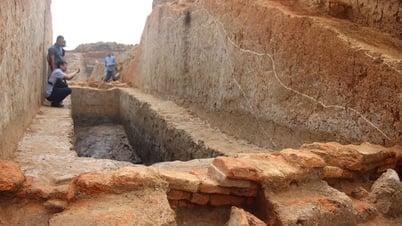




















![[Maritime News] Wan Hai Lines invests $150 million to buy 48,000 containers](https://vphoto.vietnam.vn/thumb/402x226/vietnam/resource/IMAGE/2025/6/20/c945a62aff624b4bb5c25e67e9bcc1cb)


























![[VIDEO] - Quang Nam Business Association and the mission of creating a development environment](https://vphoto.vietnam.vn/thumb/402x226/vietnam/resource/IMAGE/2025/6/21/098925da24ac4f73a023890b30c5196f)

















Comment (0)